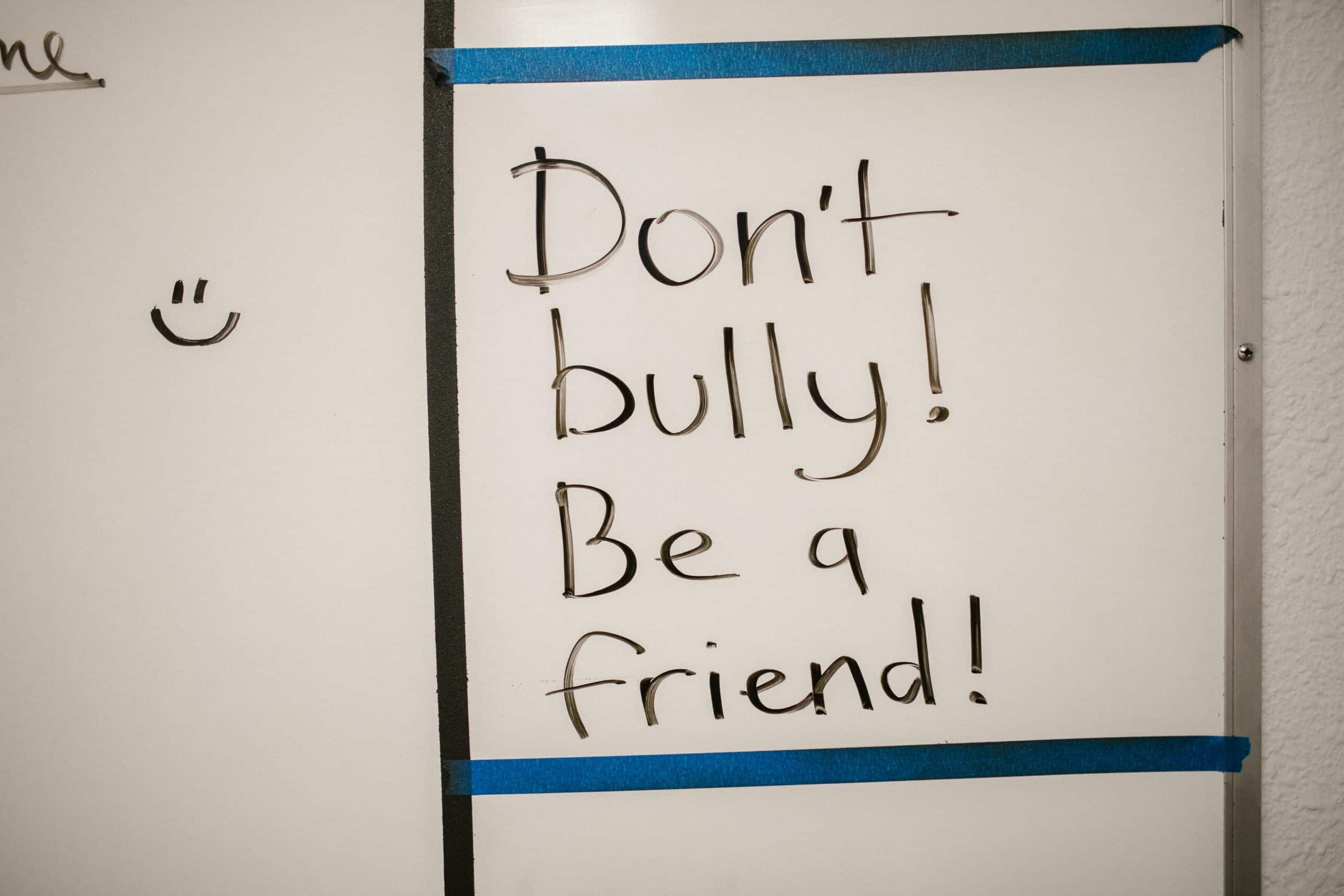
08 Nov How To Make Your Classroom A Safe Space
Anti-Bullying Week.
Did you know that in previous years 1 in 10 children said that they missed school due to bullying?
Children are entitled to a stable education. But a single or reoccurring absence due to bullying will impact a child’s education and their ability to learn and grow.
With Anti-bulling week commencing on November 13th we wanted to share our advice with teachers on how to make your classroom a safe space to help students who may be experiencing bullying either in or outside of school, using our S.M.I.L.E method.
S.M.I.L.E
Speak.
Speak with your students. Make it a must to speak with them on a daily or regular basis.
Encourage them to be open and honest with you. Ask them questions relating to their work or overall school experience.
And if a student discloses any alarming information, ensure you follow the school’s safeguarding procedure to help them.
Through speaking with your students you will build trust. And trust is the foundation of all strong relationships.
And when time is limited, speak with more than one student at a time, use group conversations. Get students talking to each other as well as to you.
Motivate.
Motivate students to learn from their mistakes. Make mistakes a learning opportunity for your students. We all make mistakes, it’s part of how we learn and grow.
Don’t embarrass your students when they make mistakes in class. Instead, opt for a calmer tone and maybe address why the student was incorrect in a one-to-one discussion.
Or address the whole class when a mistake occurs. The likelihood is that more than one student would have made the same mistake.
Don’t leave your students sitting in the dark, help them learn from their mistakes with any extra support.
Inclusion.
Include all your students in every lesson and activity. Don’t leave anyone out.
Ensuring no one is left out can be overwhelming when you have near 30 students in a class, and it’s even harder in secondary schools where you teach near 30 different students every hour.
But no one deserves to feel left out.
Use your registration list to go through and ensure everyone who is present is paired with someone when it comes to joint activities.
Try to avoid letting students always pair with friends, but also try to notice which students don’t feel and act comfortably when placed together.
Listen.
Listen to your students. As important as it is to speak with your students, it’s important to listen to them too.
Listen to what they have to say. Do they have any worries or concerns when it comes to either of their academic or personal lives?
Any concern they have, whether big or small should be considered.
Through listening to your students you’ll be able to actively help them where and when possible.
Encouragement.
Encourage your students to interact with each other.
When possible, opt for using group activities instead of individual work. Get your students working together.
Two heads are better than one after all!
Bring students together who don’t typically interact when outside of the classroom. You never know how many unlikely friendships can form through group work.
And Smile
As well as our S.M.I.L.E method, another way you can make your classroom a safe space is with a smile!
Greet your students in the morning and afternoon with a smile.
It’s not always an easy ask, especially when you don’t feel great in yourself. But one smile can brighten a student’s whole day.

Stand Against Bullying
Preventing bullying is a process, one that will take time.
We haven’t discussed the ways you can prevent bullying today because, as teachers you may not be able to see all the clear signs that a student is being bullied, and a student may not be open in telling you at first.
However, by creating a safe space with your classroom, you can help your students feel welcome and place them at ease. And with our S.M.I.L.E method you may find students feel more open in telling you if they’re experiencing bullying.
If you found this blog useful, please share it with your family, friends, or colleagues. The S.M.I.L.E method can be adapted for any environment, not just a classroom.
Just remember SMILE.
